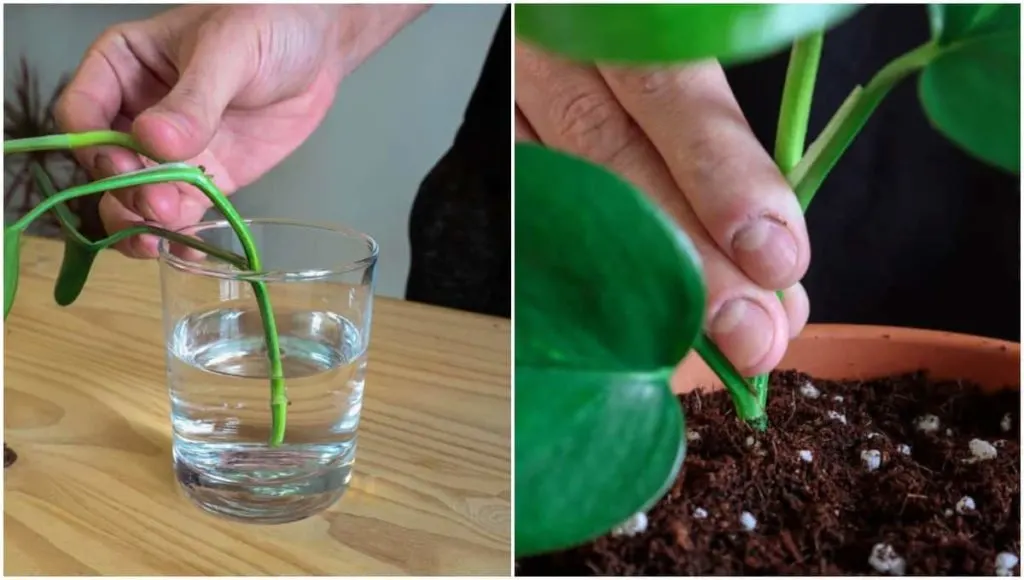
Look at any beginner-friendly houseplant list, and you will undoubtedly find pothos right near the top.
Pothos, botanically known as Epipremnum aureum, are some of the easiest indoor plants to care for, suiting a wide range of growing conditions.
They can handle less light than other houseplants and aren’t too fussy about humidity. Plus, they are the perfect living décor piece, hanging along bookshelves or climbing up a trellis for a vertical living wall feature.
But that’s not all. They are also one of the easiest plants to propagate.
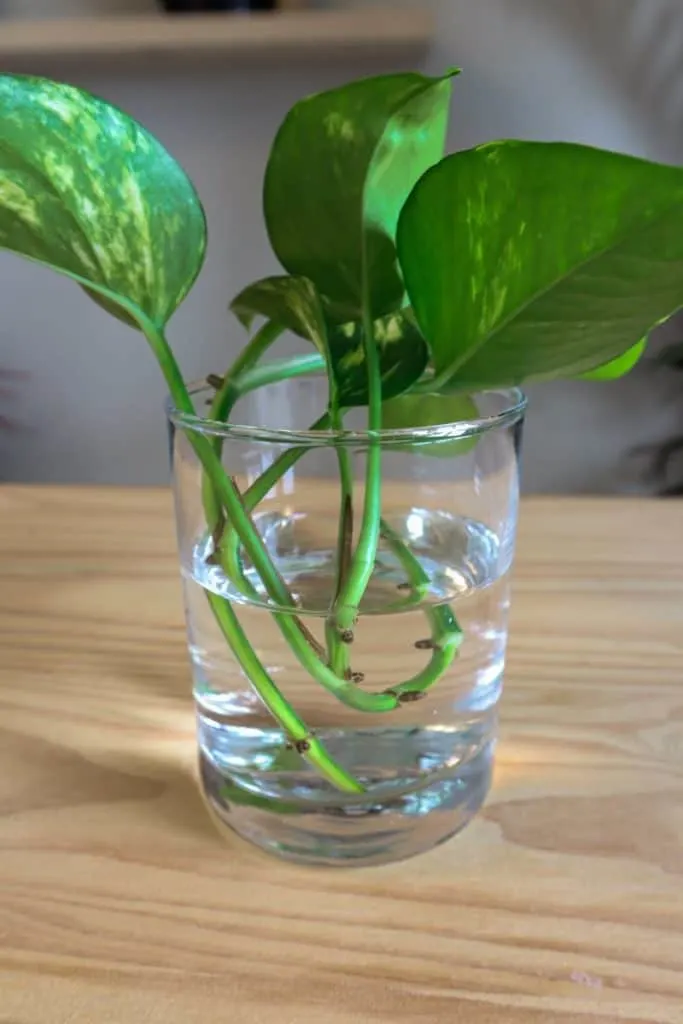
Within a couple of weeks, you can grow an entirely new pothos plant and gain double these benefits, or more.
Follow these simple steps for more pothos plants, without the expense.
1. Remove The Cuttings
Before you start, ensure you have a clean, disinfected pair of pruning shears or scissors. This prevents any potential diseases or bacteria from spreading to the new cuttings and the parent plant.
They should also be as sharp as possible to make a clean cut and prevent damage to the stem.
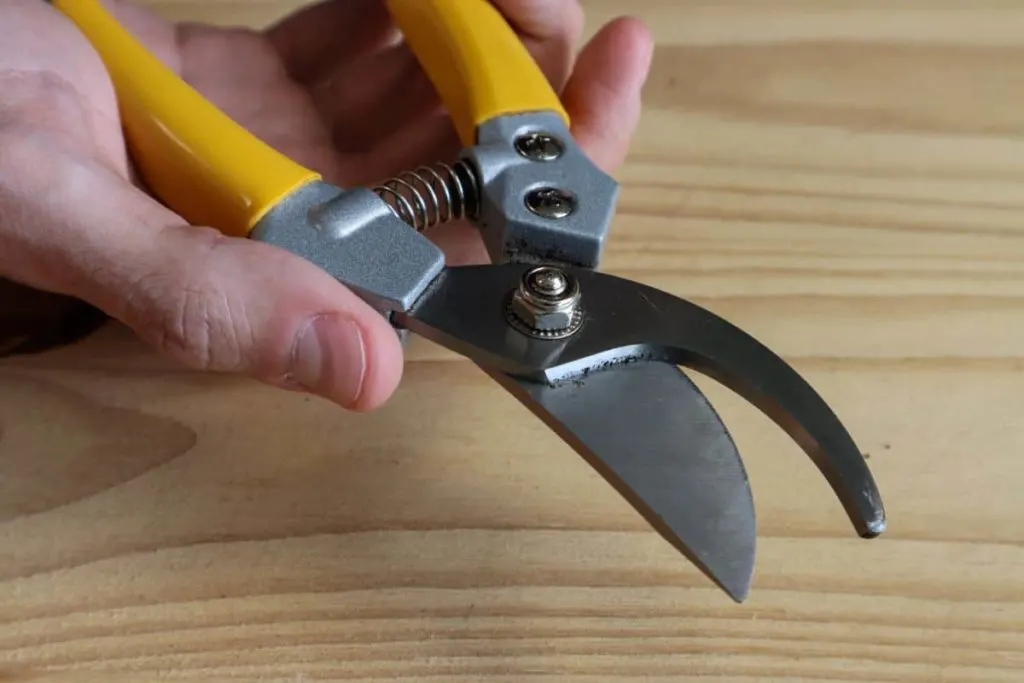
Choose a long, healthy stem to take a cutting from. The healthier the stem, the higher the chances of successful rooting.
Remove part of the stem a minimum of four inches long, right below a leaf node (where the leaf meets the stem). For the highest chances of rooting, your cutting should have at least three or four full leaves. Cut at a 45° angle to increase surface area.
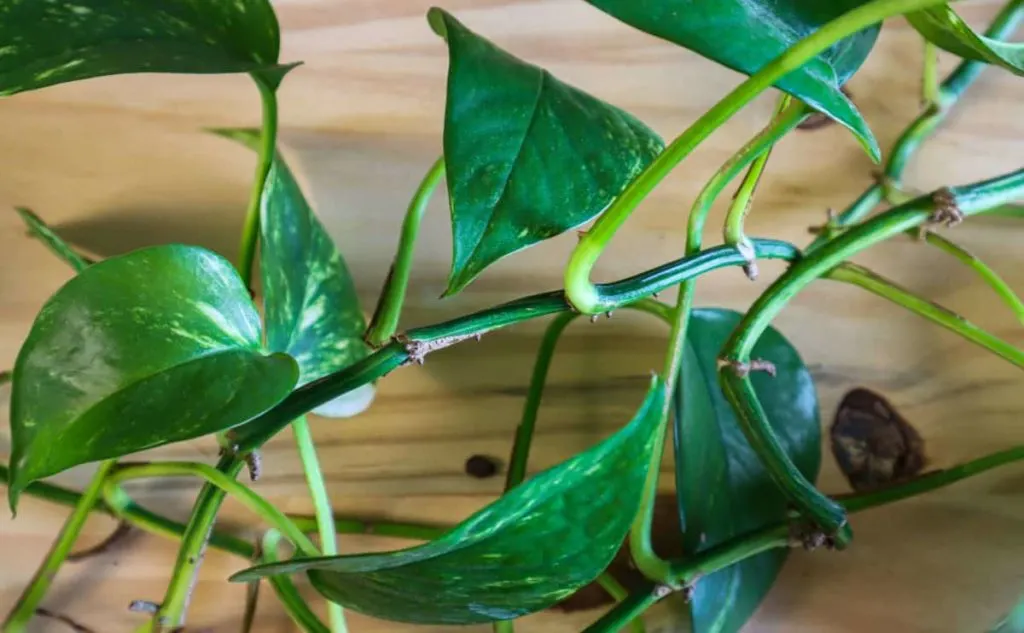
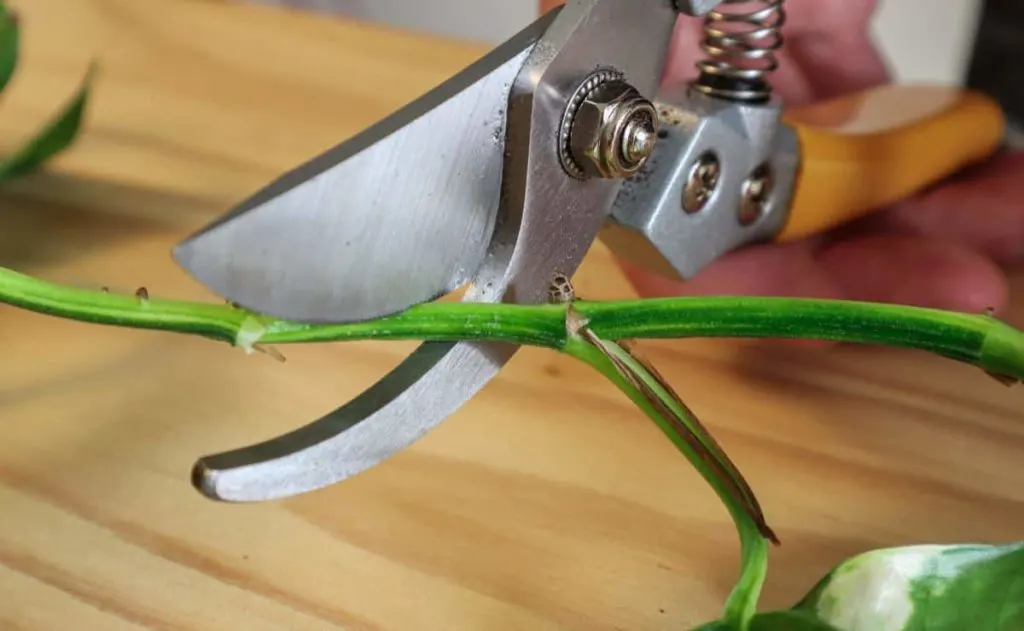
Remove the bottom sets of leaves from the stem, leaving at least one or two leaves at the top. If you have a longer cutting with several nodes, split it into two sections. The more cuttings you take, the higher your chances of successful propagation.
Once the cuttings have been prepared, you are ready for rooting. This can be done either in water or straight into soil.
2. Root The Cuttings
In water
The first and undoubtedly most popular propagating method is in water.
This method is the simplest and requires no equipment to get started. Plus, it’s a fun experiment to watch your cuttings grow roots in real time. This also allows you to keep an eye on their progress, with a clear indication of when they are ready to transplant.
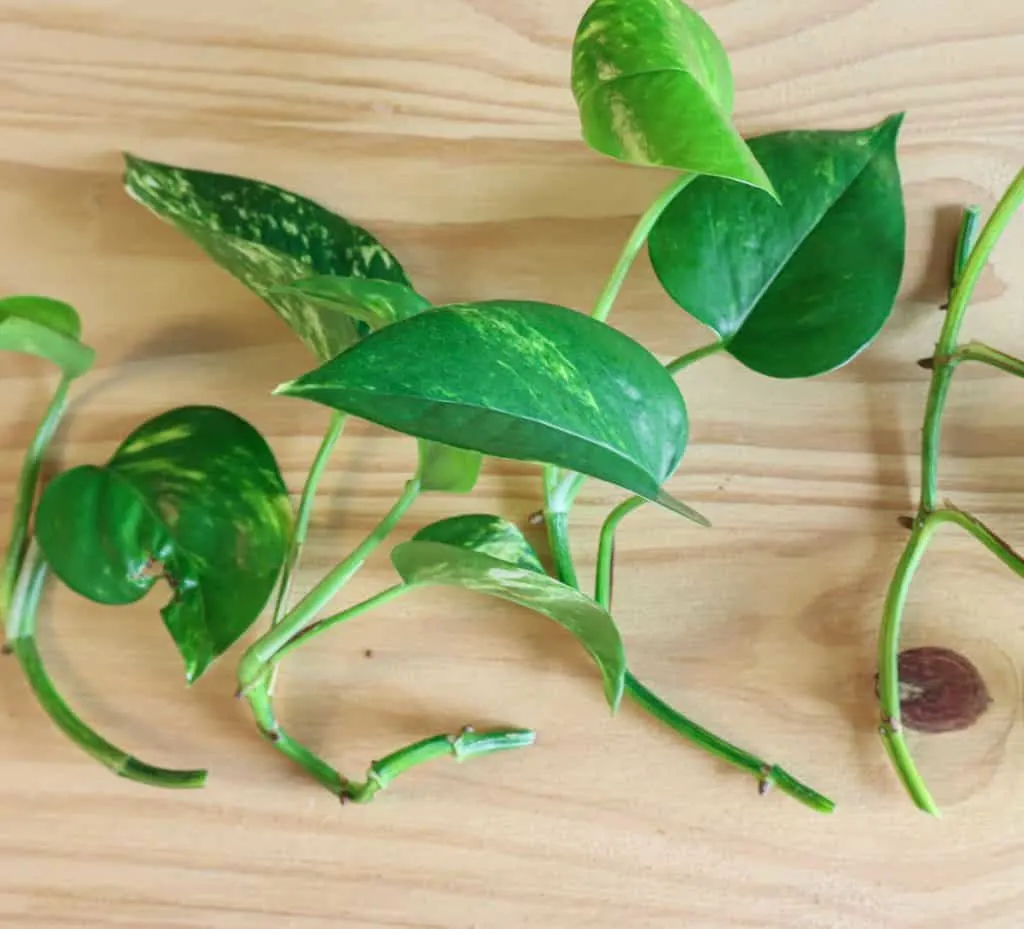
All you need is a glass and some room temperature water. Filtered water is best, as the chemicals in tap water may hinder growth, but it’s not a necessity. You can also boil water and leave to cool before use. Room temperature or slightly warm water is far better than ice cold tap water for stimulating growth.
This is where you can get creative. A regular glass will do just fine, but decorative glasses like test tubes or vases turn what can be a messy or unsightly exercise into a trendy décor piece. Here are some of the most beautiful propagation stations to turn your propagating into a gorgeous piece of decor.
Then, simply place the cuttings in water, resting the stems on the side of the glass. Ensure no leaves are submerged under the water as they can rot and encourage bacterial growth. Replace the water every couple of days or if it appears cloudy.
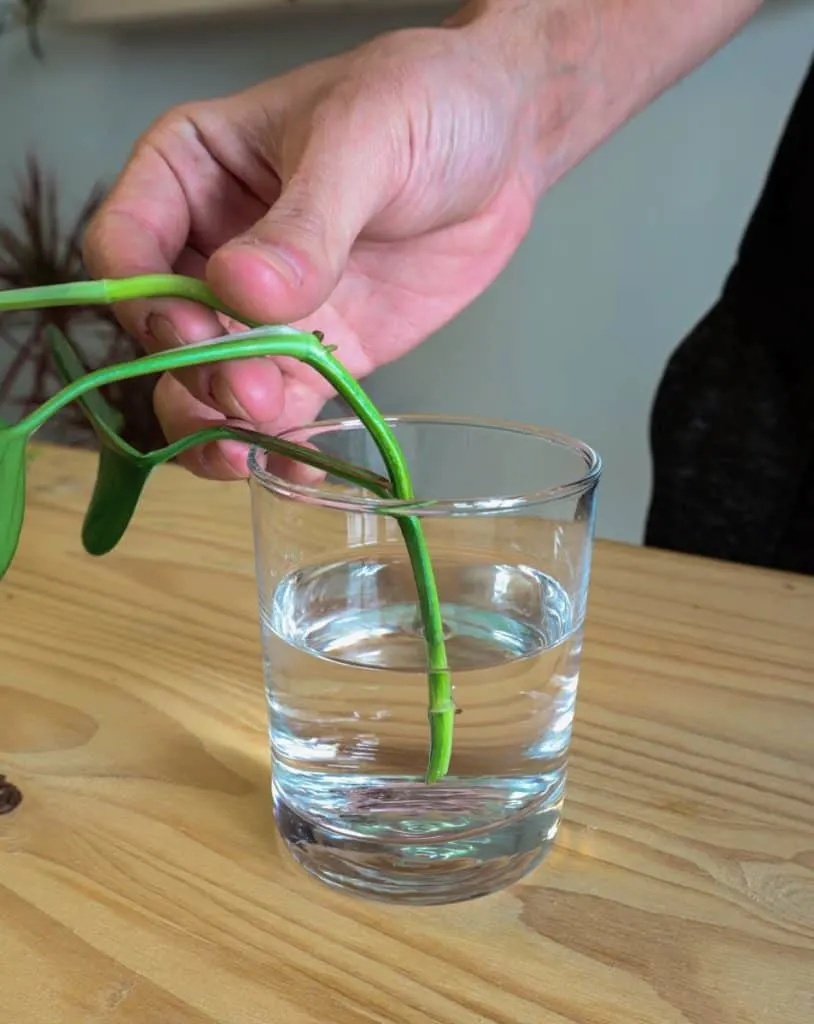
Place the glass in an area with bright, indirect sunlight. It should also be warm enough to stimulate root growth. Avoid spots right next to a window during cold weather as they may inhibit growth.

In soil
You can also plant the cuttings straight into soil, limiting the need to transplant later on. For this method, you will need a pot and a homemade houseplant potting mix.
Fill the pot with a mixture of potting soil, coconut coir and perlite to improve drainage. A high-quality potting soil will ensure your cuttings get the best start. Good drainage is also vital to prevent rotting – ensure there are plenty of drainage holes at the bottom of your chosen container.
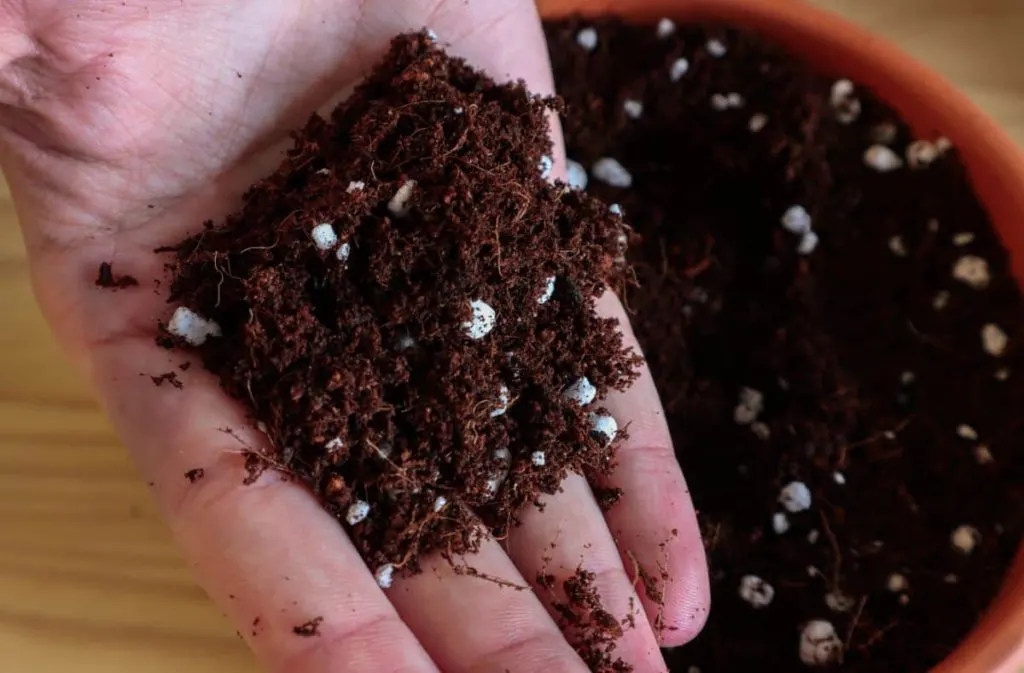
Plant a few cuttings around the edges of the pot, burying the bottom half of the stem in the soil.
If you want to increase your chances of rooting, dip the ends of the cuttings into a rooting hormone first. This stimulates growth and limits problems with disease later on.
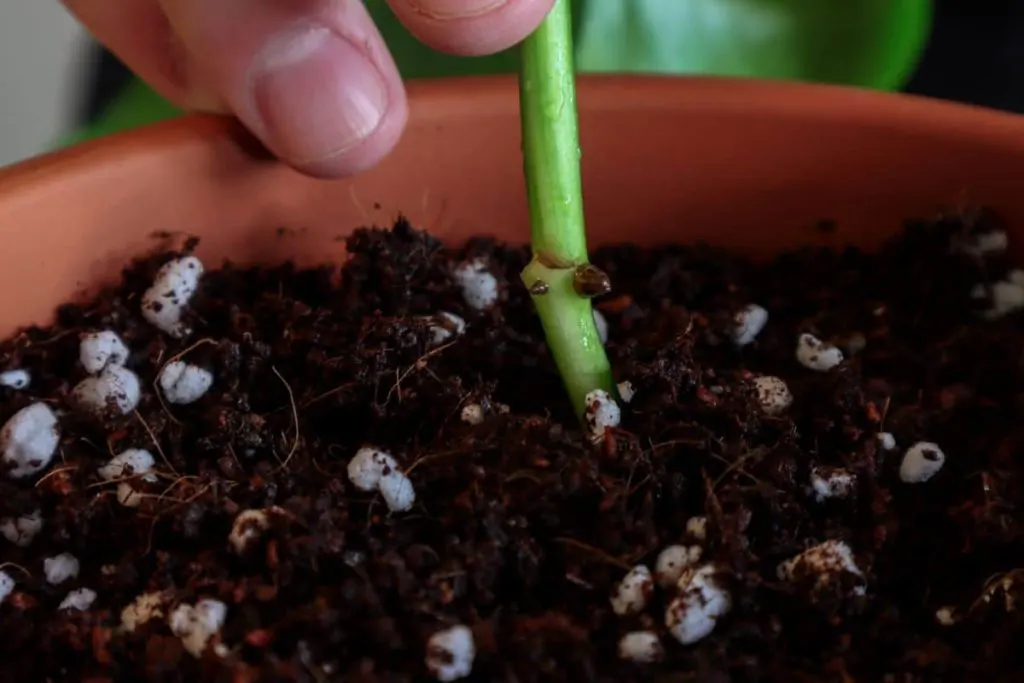
Water the pot thoroughly, allowing the excess to drain out the bottom. Leave the pot in a warm spot with plenty of indirect light, but no direct sunlight to avoid burning the leaves. Keep the soil moist by misting every couple of days and wait for new growth.
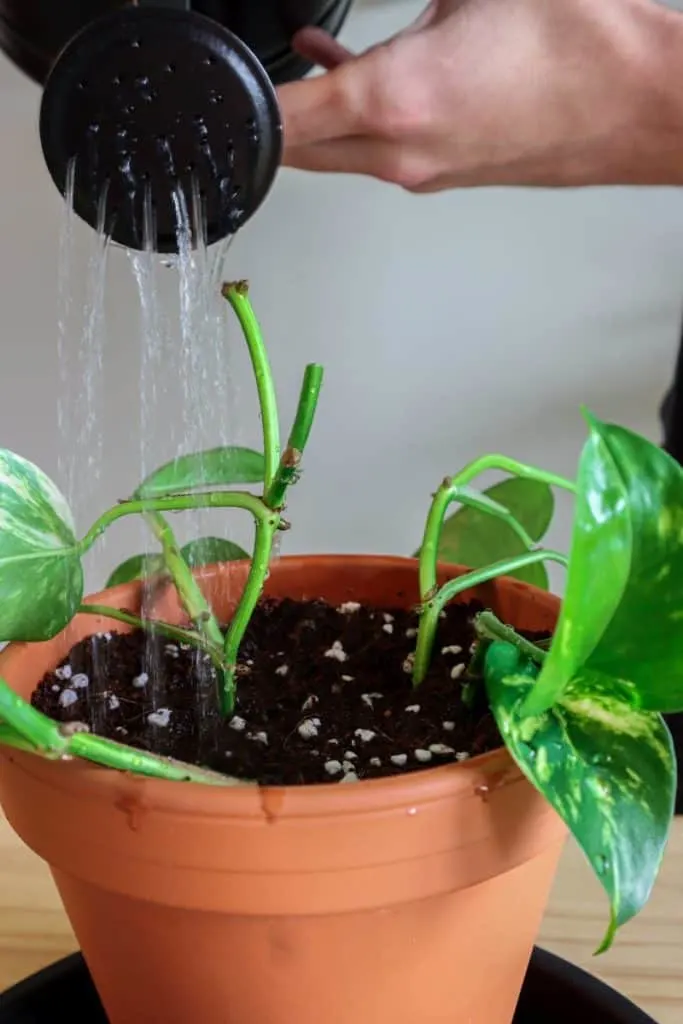
3. Transplant The Cuttings
When rooting in water, you will need to transplant the cuttings into soil when the roots are ready. The longer you leave the cutting in water, the harder it will be for the plant to adapt to soil conditions. Sooner rather than later is always preferred – as long as the roots are long enough.
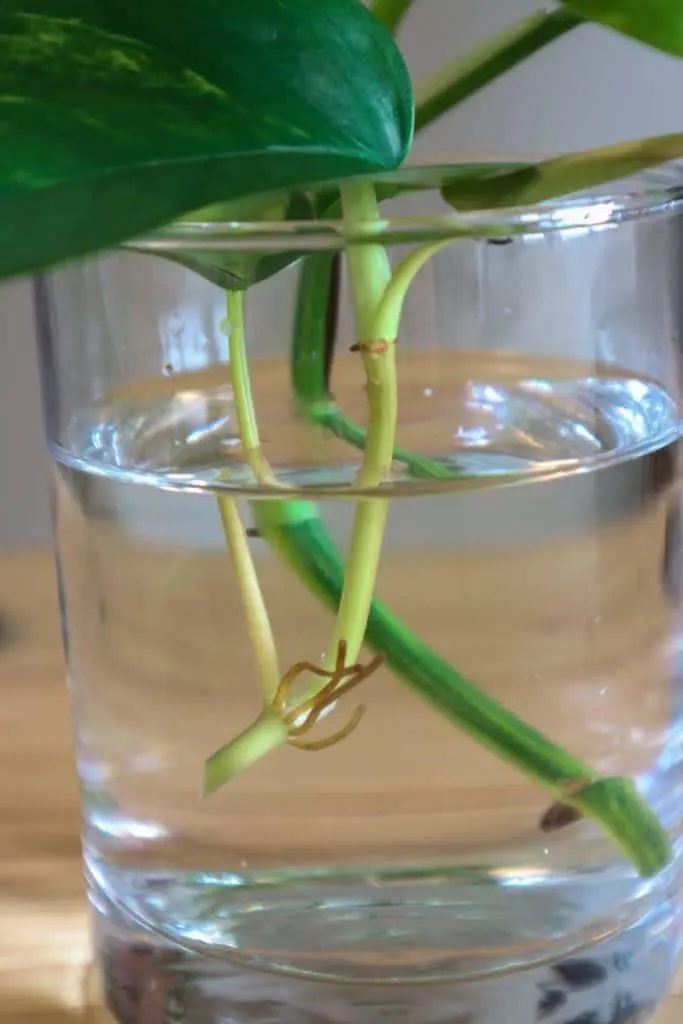
Wait till the visible roots are at least an inch long. This may take several weeks, but cuttings can remain in water for around two to three months without any issues.
When you are ready to transplant, prepare a pot filled with houseplant soil mix as above. Gather several cuttings together to form one group of plants and plant in the same pot. This will give you a fuller plant similar to those bought from nurseries, rather than a sparse plant with a single stem.
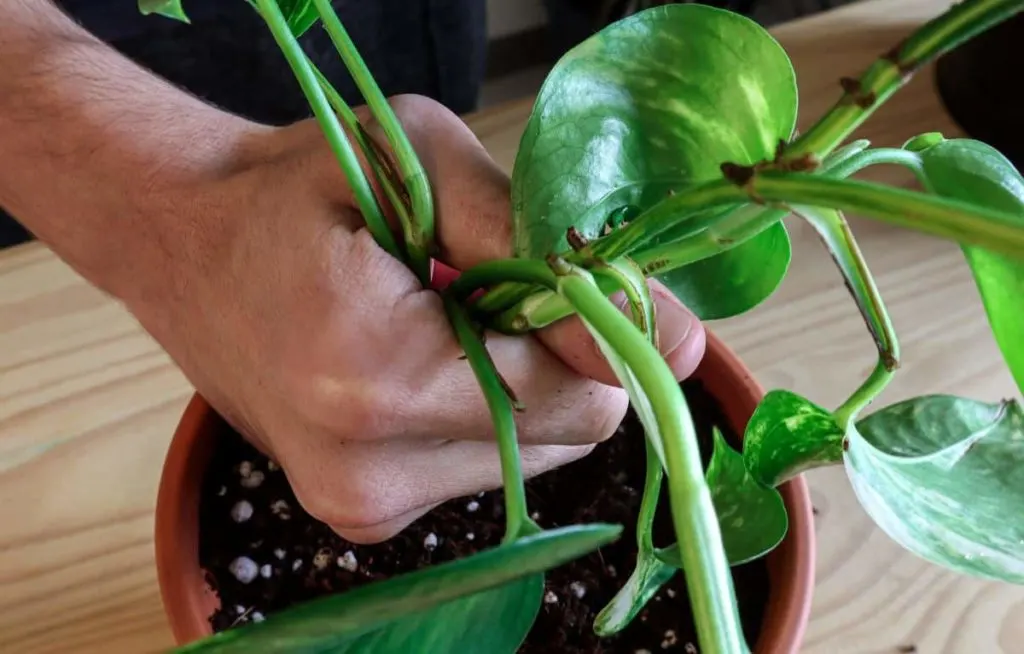
Fill in the gaps around the stems with more soil mix, ending just below the rim of the pot. Press down gently around the soil to secure the cuttings in place.
Water thoroughly after planting to get rid of any air pockets in the soil and to stimulate further root growth. Keep the soil well-watered for the next few months while the plant gets used to its new environment.
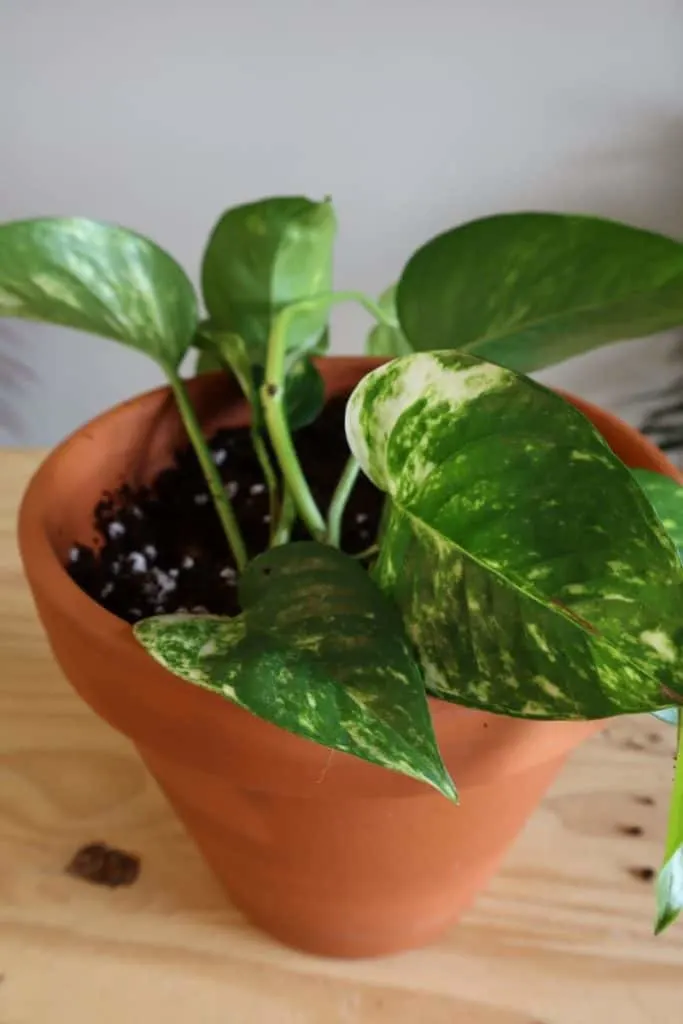
7 Reasons Why Your Pothos Cutting Didn’t Root
Although pothos is one of the easiest plants to propagate, neither method is guaranteed. There are a few issues or mistakes that can prevent root growth or successful transplantation. Take a look at these reasons and use them as a guide on what practices to avoid.
1. You cut the stem in the wrong place
Pothos roots grow from nodes in the stem – the area where the leaves emerge. In order for roots to grow, one of those nodes along the stem needs to be under the water or in the soil.
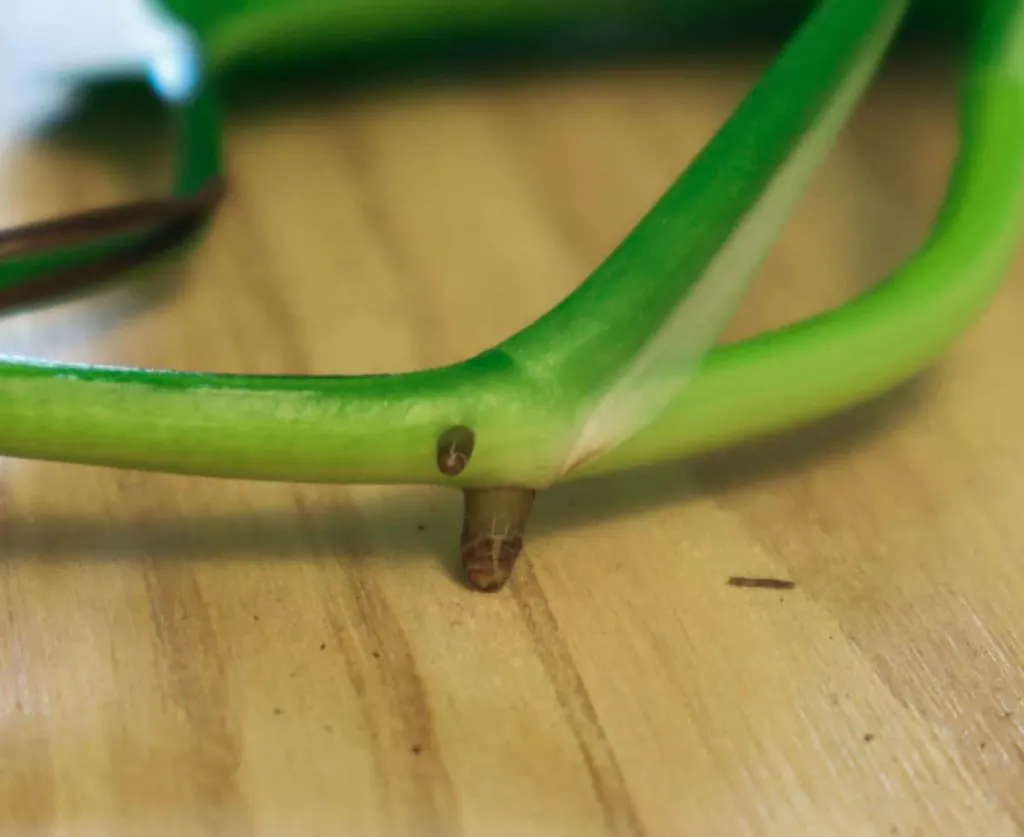
If you’ve left too much of the stem below a node where it is suspended above the water, it will not develop roots. Similarly, if your cuttings have leaves at the top but no nodes at the bottom, there is nowhere for the roots to grow from.
2. You didn’t change the water
Roots are able to grow in water due to the oxygen present. After a few days of sitting, the oxygen in the water gets depleted. Without oxygen, like humans, the roots will eventually suffocate.
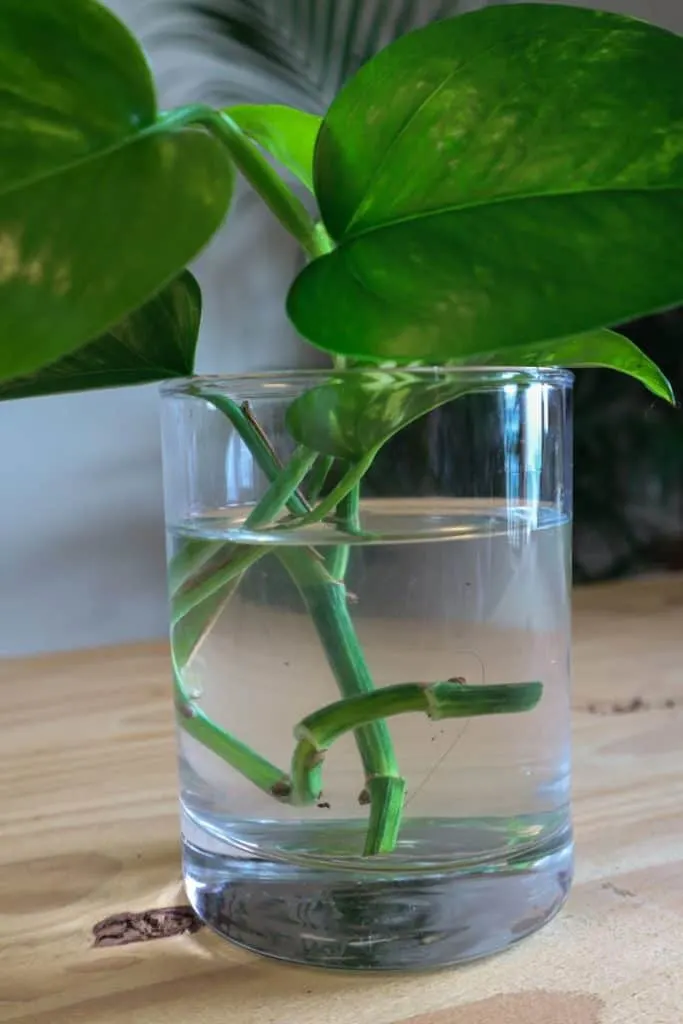
Standing water can also attract bacteria and other pests or diseases that stunt growth or rot the cutting. Ensure you replace the water every couple of days or when it appears dirty to keep your cutting healthy.
3. There isn’t enough light
Plants need sunlight for photosynthesis to produce energy. If you’re hoping your plant will grow new roots, it needs sunlight.
While pothos plants can survive on less light than some other houseplants, they will always do best in a bright spot with indirect sunlight. Plants in lower light conditions will take far longer to develop roots, or they may not develop roots at all.
4. You took a cutting from an old/damaged vine
For the highest chances of success, it’s best to remove a cutting from a vigorously growing, healthy vine. This indicates that transportation systems within the stem are functioning properly and will be able to grow roots.
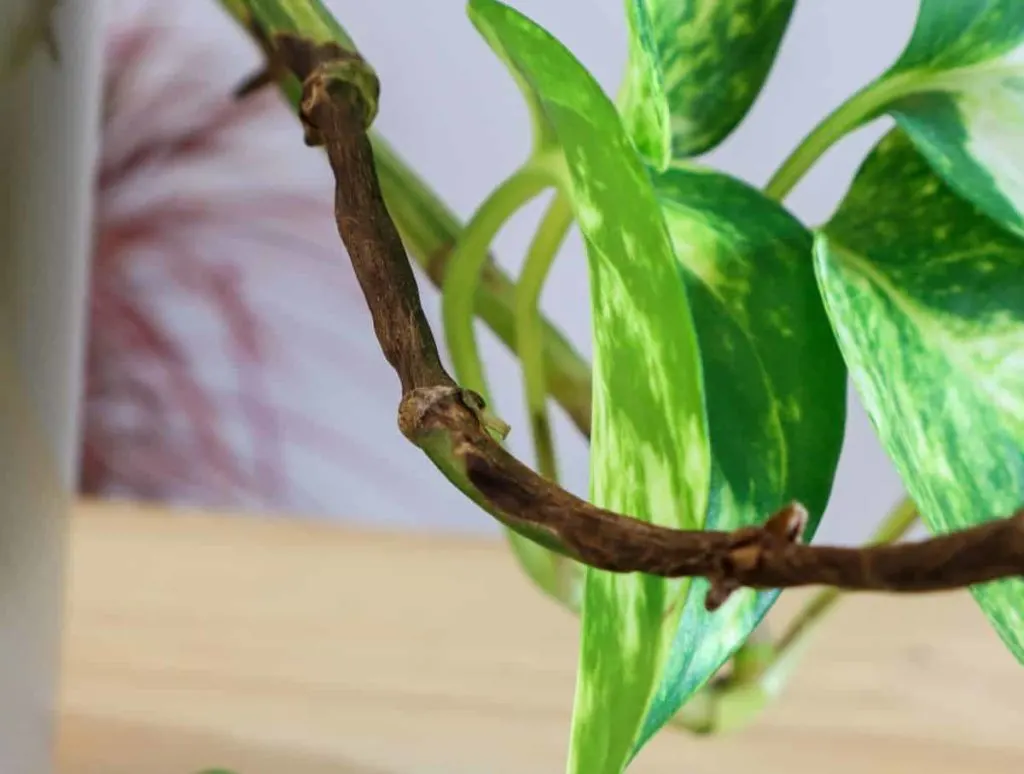
If the stem is old is partially damaged, the plant will struggle to develop roots. Even if roots do develop, they may not be as strong or healthy as those from a better cutting. Root growing takes a lot of energy – choose a stem that can handle the work.
5. There isn’t enough warmth
Pothos plants are tropical and prefer warm environments with high humidity. These conditions are best for rapid growth, especially during spring and summer at the peak of their growing season.
If you’re propagating in a cold room or in winter, slow growth or almost no growth is to be expected. Always place your glass or pot in the warmest room of the house, or use a heating mat in colder areas.
6. You transplanted too late
The roots your cuttings will grow in water are slightly different from those in soil. They are finer and more delicate, adapted to obtaining everything they need from water alone. The longer you leave these roots to grow, the harder it will be for them to adapt to living in soil.
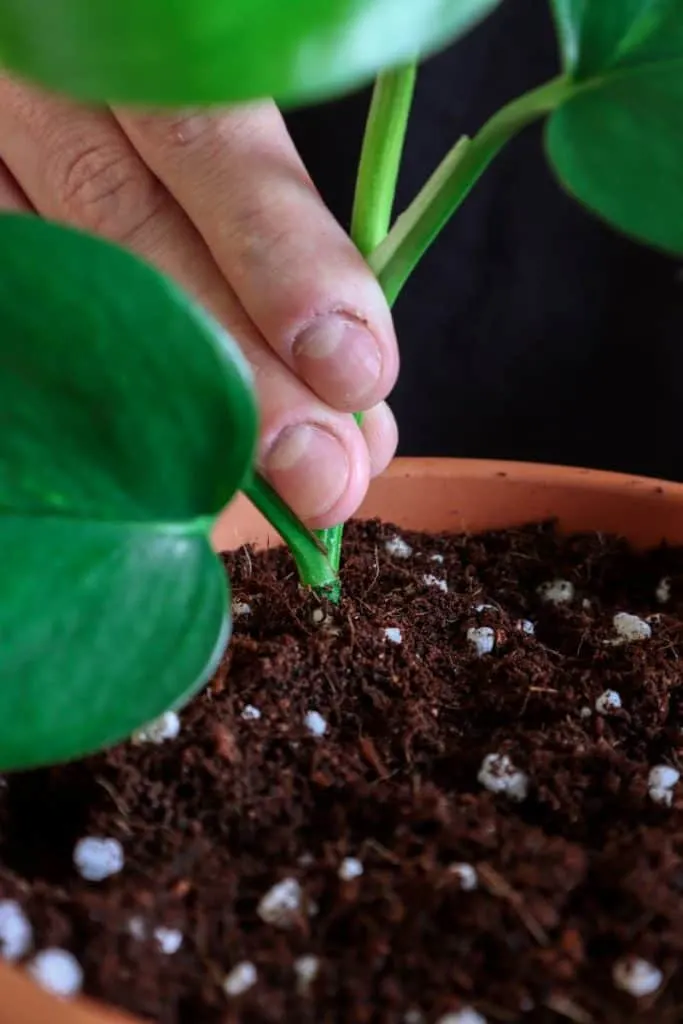
Transplanting too late can result in transplant shock (usually indicated by yellowing leaves) or leave your cutting unable to root properly in the soil. Transplant after the roots have grown at least an inch or two and don’t leave them for more than a few months to prevent transplanting problems later on.
Another way to prevent transplant shock is to slowly introduce the growing medium to the water. When the roots are ready, add a teaspoon of coconut coir or perlite to the soil every day until the glass is full. This will help the roots slowly acclimatize to the new conditions, preventing shock.
7. They need more time
Propagation may be easy, but it is certainly not quick. The roots will take at least four weeks to reach the transplantation stage, possibly longer. In the plant world, the growth is rather quick, but it can be a long time for us impatient gardeners.
If your cutting is not developing roots and it’s only been a week or two, start by giving it a bit more time. If absolutely no growth is visible after a month, you may have another problem on your hands, but any issues before that should not warrant worry.
